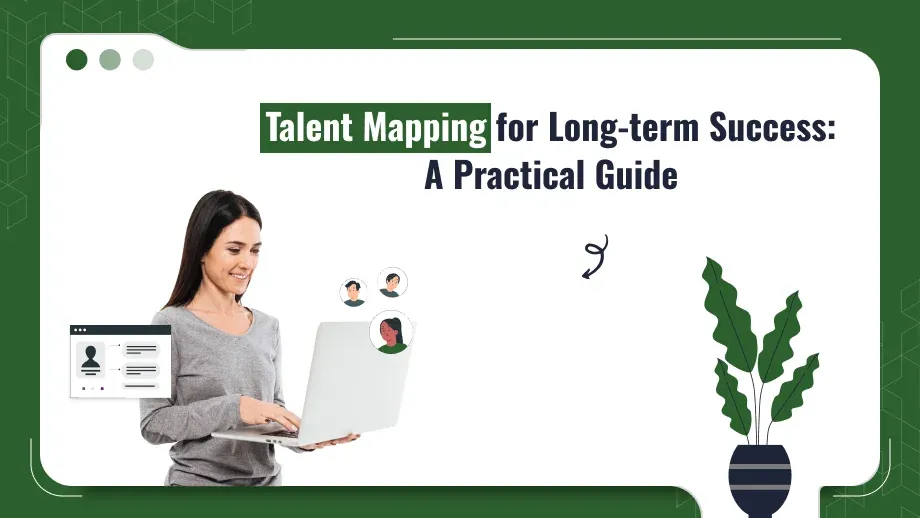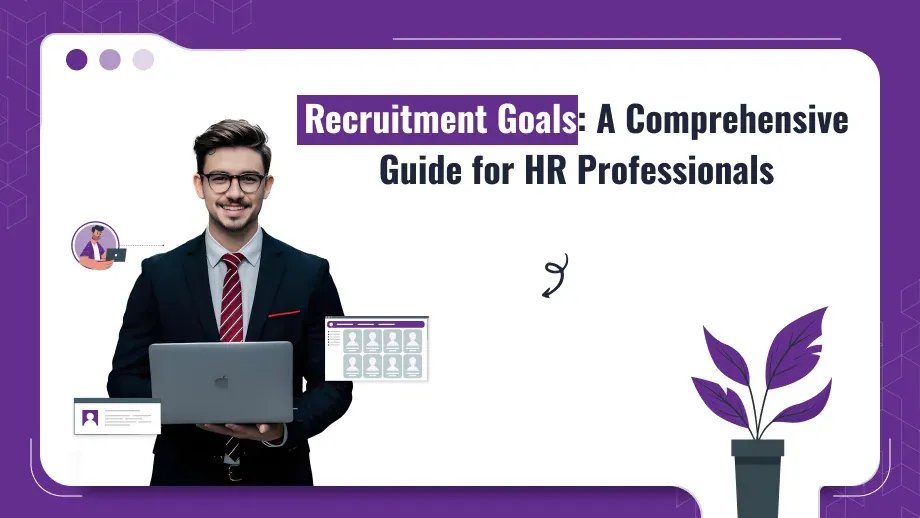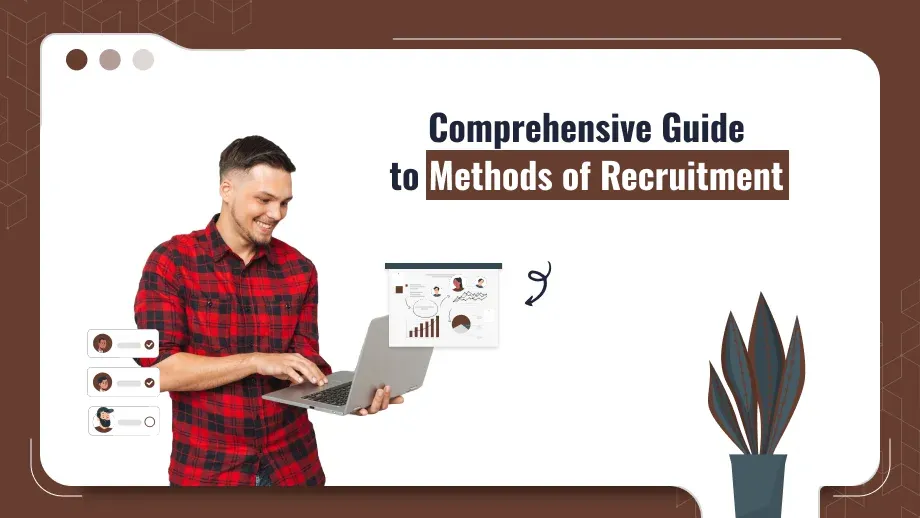
Talent mapping is considered a strategic process to identify, evaluate, and develop potential talent within and outside of an organization. It holds the urge for businesses in today’s competitive job market to make themselves ready with the right talent today and tomorrow. Unlike traditional recruitment, it is a long-term approach to workforce planning, supporting companies in the preparation of their future talent needs.
What is Talent Mapping?
Talent mapping is the proactive process of analyzing and identifying both internal and external candidates on key job postings in an organization. It is constantly followed while helping a long pipeline of qualified candidates to fill critical future roles. This for recruitment ensures succession planning, skill gap analysis, and general workforce strategy.
Companies can reduce risks associated with unexpected vacancies and are placed in a good position through talent mapping recruitment strategies. It is a strategy different from other recruitment practices since it is focused on strategic planning, the evaluation not only of the current employees but also of external applicants, and ensures that workforce needs are aligned with business objectives.
Key Benefits of Talent Mapping
Identifying Skill Gaps
Recruitment also helps organizations identify where there are critical skill gaps. Evaluating the competencies needed to achieve strategic goals for companies assists in identifying exactly which candidate should be hired or what kind of training should be targeted for the gaps.
Effective Succession Planning
Thus, succession planning will be ensured for the continuation of business, especially those key roles that hold prominence in business. This software involves looking into candidates who can fill the positions as leaders. It will ensure less disruption possible by showing more smooth transitions.
Improving Employee Retention
Employees need development. recruitment helps an organization know its workforce the career progress and career growth opportunities, therefore improving employee satisfaction in organizations and also retention. With the help of this software, companies can assess individuals’ progress and place employees in specific roles that would reflect their strengths.
Enhanced Competitive Advantage
It helps an organization be forward-thinking to identify people and their skill sets needed in key positions, thereby enabling a competitive edge in business functions. this process is part of a global strategy for acquiring the best talent in organizational operations. It helps organizations understand the external talent landscape and how to attract and retain talent.
How to Do Talent Mapping: A Step-by-Step Guide
These involve several steps and are, therefore, aligned with business objectives. Here is a holistic approach to putting this kind of recruitment within an organization:
Define Business Objectives
The very first step is to understand the strategic goals of the company, which essentially means identifying the skills, competencies, or roles that need to be fulfilled to meet such objectives. Clear business goals allow organizations to concentrate on actual talent that may meet future demands.
Identify Key Roles and Skills
Certain roles that are critical to business success happen in every organization. In the recruitment processes, such identification of critical roles and the competency needed for each role becomes significantly important. The leadership roles, innovation roles, and revenue-generating roles often come with specific skills, thereby requiring mapping.
Assess Current Workforce Capabilities
A key element in talent mapping in recruitment is to evaluate the strengths and skills of the current workforce. It enables an organization to understand its areas of talent gaps and which of its employees can be upskilled or promoted to fit future roles. Digital tools such as Applicant Tracking Systems and HRMS payroll software in india may help gather and analyze data to get effective recruitment.
Map External Talent Pools
It compares external talent pools with what already exists in the companies. Talented research will make it possible for companies to understand how many of the skills they want exist in the market and how to possibly get these people. Businesses through recruitment technologies and talent mapping software now gain insight into potential candidates outside the organization thus including the passive candidates who are not searching for jobs.
Develop a Talent Pipeline
It is one such talent process where the ultimate aim is to develop a pipeline for potential talent. This means making an internal list of candidates from within and external that can fill up the key roles. The database on the same can then be maintained by a recruitment management system, with the aid of an all-inclusive recruitment report, which can then be followed up and kept engaged for future opportunities.
Tools and Resources for Effective Talent Mapping
A successful talent mapping process relies on data-driven tools that streamline tracking and assessment. Here are some resources that enhance the experience:
- Applicant Tracking Systems (ATS): Helps track candidates’ progress, organize resumes, and facilitate communication during recruitment.
- Talent Mapping Software: An application that can map abilities and track the growth of employees in terms of talent mapped against the needs of the business.
- HRMS Payroll Software in India: Offers integrated solutions to manage payroll and employee data, helping HR teams keep comprehensive employee profiles.
- Recruitment Technology and Management Systems: Supports by providing data on internal and external candidates, skill requirements, and market trends.
By using these digital tools, companies can make more informed talent decisions and improve their recruitment process.
Align your team’s skills with tomorrow’s goals with talent mapping.
Book a Payroll Demo with Superworks today!
Talent Mapping vs. Traditional Recruitment
As far as conventional recruitment is concerned, it has always been about filling immediate vacancies. This is proactive in developing a pipeline of candidates for future requirements. Here’s a comparison between the two:
- Traditional Recruitment: Reactive, filling up the slots as they become vacant. It often depends on the active candidates.
- Talent Mapping: Proactive, identifying high-potential candidates long before a vacancy occurs. Considers both active and passive candidates.
Integrating Talent Mapping with Talent Development
It can also give valuable insights to inform training, upskilling, and development programs. For example, in a company, this identifies all high-potential employees who may be groomed for leaders to occupy the next ranks; it provides customized development plans for the employees. This integration of these processes with talent development helps the employees grow and prepares them for future demands.
Regular updating of this process and alignment with talent development goals would help build a more agile workforce that progresses along career paths aligned with their strength to finally contribute to overall job satisfaction.
Challenges in Talent Mapping and How to Overcome Them
Despite all the benefits it offers, it also has its limitations that organizations are bound to work on so they can get the best out of this process. Here’s a look at some of the major challenges of recruitment and how to overcome them:
Limited Access to Accurate Data
Data is the heart of effective this process. How does one go about collecting trustworthy, all-encompassing information regarding internal versus external candidates, though? Data inaccuracies or old information might prevent effective decisions and hinder efforts at talent mapping.
Solution: Leverage applicant tracking systems and their software to organize, collect, and analyze data correctly. Maintain employee records up to date, and be sure of the reputation of external sources of data. An ATS can make it possible to collect data conveniently and hence make an effective talent pool assessment.
Changing Workforce Dynamics
Jobs will always come up and down and seem to pop out at times, roles that appear, disappearing demand for certain skills, and so on. In that regard, it becomes hard to stay up to date with correct talent maps suited to current workforce requirements.
Solution: Stay agile and make it an ongoing process. Regularly revisit and adjust talent maps to reflect the latest industry trends and company goals. Use recruitment technology to gain insights into evolving skill requirements and adjust the talent map accordingly.
Competition for Top Talent
In today’s competitive market, high-demand candidates are often approached by multiple organizations, making it challenging to secure them for future roles. This intense competition can reduce the effectiveness of its efforts if top talent is continuously absorbed by competitors.
Solution: Brand yourself as an attractive employer, and reach out to potential applicants even when you are not hiring. That advantage would make you secure the best talent if you are perceived as a good place to work based on networking, industry events, or social media communications.
High Costs Associated with Mapping and Retention
It can be resource-intensive, requiring significant time, technology investments, and sometimes dedicated personnel. Additionally, once high-potential candidates are identified, retaining them can be costly if other organizations offer better compensation or benefits.
Solution: Prioritize this effort by focusing on the most critical roles and high-impact employees. Consider using HRMS Payroll Software in India to optimize payroll processes and manage benefits effectively. Blanket Software Support for Compensating Packages A software can also help ensure competitive compensation packages so that key talents are retained without overpaying.
Lack of Skilled Personnel to Conduct Talent Mapping
The validity of this process is only matched by the intensity of skilled employees who understand the business strategy and are cognizant of the intricacies of the recruitment process. Many organizations are only constrained to a large extent in their ability to implement a holistic strategy due to the simple reason that there are not enough professionals who have been trained in this recruitment.
Solution: Invest in training and development programs for personnel involved in this process. Upskill internal staff or consider outsourcing recruitment to experts with specialized knowledge. Training current employees ensures that they understand the nuances of this process and align it with business objectives.
Resistance to Change
Implementing a proactive talent process may face resistance from management or teams accustomed to traditional recruitment methods. This resistance can make it challenging to fully integrate it into the organization’s hiring and development practices.
Solution: Communicate the benefit of it and how this will align with the broader business goals. Use examples of addressing challenges in recruitment and the strengthening of the organization’s workforce as ways of responding to future needs. Other output results include having the time it takes to fill critical roles reduced or improved employee retention rates, and so forth, to gain the buy-in of leadership and teams.
Difficulty in Predicting Long-Term Talent Needs
This is particularly hard in a scenario whereby talent forecasting is taking place in industries that are undergoing rapid change. The practice of long-term needs must be coupled with an understanding of market trends and business objectives to see it through correctly.
Solution: Understand the upcoming trend and shift in the skill requirement through frequent market and industry analysis. Using a recruitment report could indicate the trends in the hiring patterns, and accordingly, it would be easier to have more accurate predictions. Also, consulting other departments to understand their future requirements could improve the accuracy of the long-term talent forecast.
Limited External Talent Insights
External and internal talent assessments would be included in it. Still, detailed insights into external talent pools will not always be easy to retrieve, particularly if they are geographically outside or else in a different industry.
Solution: Use digital tools and platforms focused on global talent acquisition to gather comprehensive data on external talent. Many recruitment management systems and their software allow you to access market data and insights on talent availability, skill gaps, and regional trends. Leveraging these tools provides a clearer picture of the external talent landscape.
Balancing Internal Development and External Hiring
This, one significant challenge will be deciding between developing internal talent for future roles versus employing external candidates. Overemphasizing either internal development or external hiring can create imbalances in team dynamics and skill diversity.
Solution: Introduce a balanced approach to it, which includes the integration of internal talent development with external talent acquisition. Identify roles where internal employees can grow and excel, and simultaneously monitor the external market for skills that might not be readily available within the organization. This balanced approach ensures that your workforce remains diverse, adaptable, and skilled.
Time-Consuming Nature of Talent Mapping
This process can be time-consuming, especially for large organizations with extensive talent needs. All these processes require enormous amounts of time and effort involving analyzing internal data, mapping the skill gaps, and continuously updating the talent map.
Solution: Automation tools that could be helpful in the process are mostly recruitment technology and Applicant Tracking Systems. It can be used to smooth out the collection and analysis of data. You will most likely save time for a procedure like this because it is semi-automated – the tedious portion will be done by the machine.
Building a Sustainable Talent Mapping Strategy
To maximize the benefits of it, it’s important to create a sustainable strategy that aligns with the organization’s changing needs. Here are some tips:
- Regularly Update Talent Maps: Business goals and market demands change, so regularly revisiting the talent map ensures alignment.
- Engage with Potential Candidates: build relationships with both internal and external talent. Keeping them engaged and aware of the progress.
- Utilize Comprehensive Reports: Use a recruitment report for this effectiveness evaluation with appropriate adjustments.
Conclusion
Talent mapping is much more than a recruitment tool; it’s a strategic approach to future-proofing the workforce in an organization. Identifying and nurturing talent proactively helps organizations meet their current and future business needs. It’s invested as part of a more elaborate talent management strategy that will create a robust pipeline and allow businesses to be agile in their workforce, enabling competitiveness. Tools such as ATS and HRMS payroll software in India will keep a company at par with their process, hence on the go-to retainers for acquiring the talent they require for success.





